
The market of non-fungible tokens (NFTs) shows no sign of slowing down. In the ever-evolving landscape of digital assets and blockchain technology, NFT marketplace design & development stands as a beacon of innovation and opportunity in 2023
Equally, many get a fair shake to nourish the growing need for dedicated NFT marketplaces and galleries.
This NFT marketplace development tutorial is based on the Agente team’s relevant experience; it talks about NFT marketplace design and development, NFT architecture & components, and the must-have features to adapt to your future project. Read our blog to learn how to create an NFT marketplace.
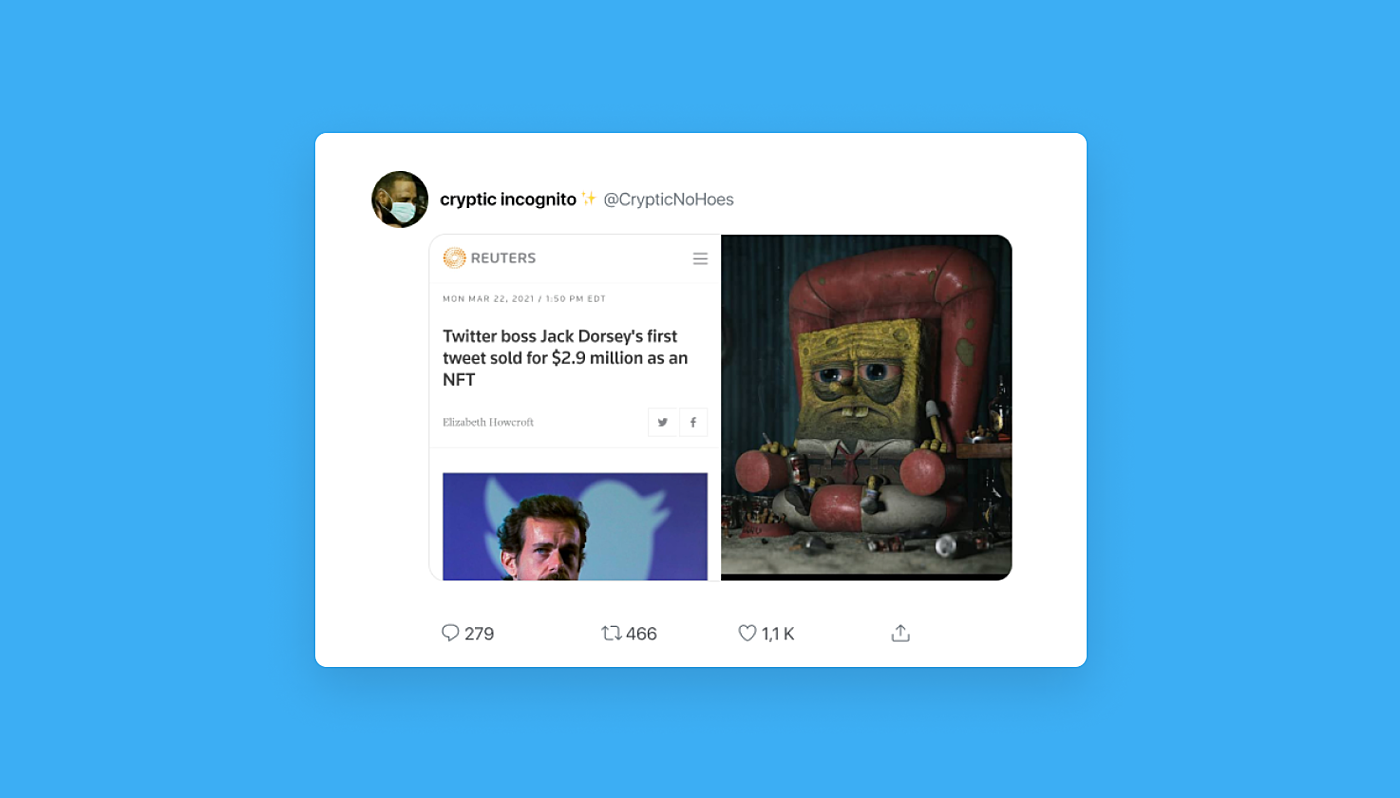
Source: Twitter
What is happening in the NFT marketplace in 2023
The NFT market has been growing significantly in the last several years, and it is anticipated that this trend will continue in the upcoming years. According to Statista, revenue in the NFT market is expected to show an annual growth rate (CAGR 2023-2027) of 18.55% resulting in a projected total amount of US$3,162.0m by 2027.

Source: Statista
The NFT boom is like a sleeping volcano that has waited for the right time to explode.
Either way, we can see multiple brands flocking to the buzzworthy trend. Is it because of all the extra attention that businesses get? Many remain adamant that NFT is here to stay, and the right time is now to get involved.
NFT Marketplace vs. NFT Gallery
Now that we’ve figured out the “whats” and “whys” behind NFT, it’s essential to distinguish between the concepts behind NFT marketplaces and galleries.
Is there any difference?
Yes, indeed.
The NFT marketplace means a platform that gathers numerous vendors and brands to sell digital assets to a curated customer base.
The NFT gallery is a dedicated platform owned by an individual brand, vendor, collector or an artists’ curator.
Real-Life Examples of NFT Marketplaces
As the NFT Crypto trends are just picking up steam, there is a limited number of traders and marketplaces worldwide. For example, the DappRadar lists 15 NFT virtual shopping environments only. While no list is exhaustive, we’ve decided to come up with our own top five:
NBA Top Shot

Source: NBA Top Shot
Dapper Labs, the Vancouver-based blockchain company, launched NBA Top Shot in February 2021. It is a single-brand NFT virtual shopping center, which offers to collect the best digital basketball highlights and buy digital packs with random moments, or you can complete a purchase via a dedicated marketplace.

Source: DappRadar
OpenSea

Source: OpenSea
The design of an NFT marketplace such as OpenSea doesn’t evoke much emotion, but in fact, it is very user-friendly. The company positions itself as the largest NFT marketplace that buys and sells rare digital assets. There are domain names, trading cards, the ability to tokenize collectibles, sports collections, images, and more. They strive to guarantee the ownership of brand-new digital items.

Source: DappRadar
Rarible
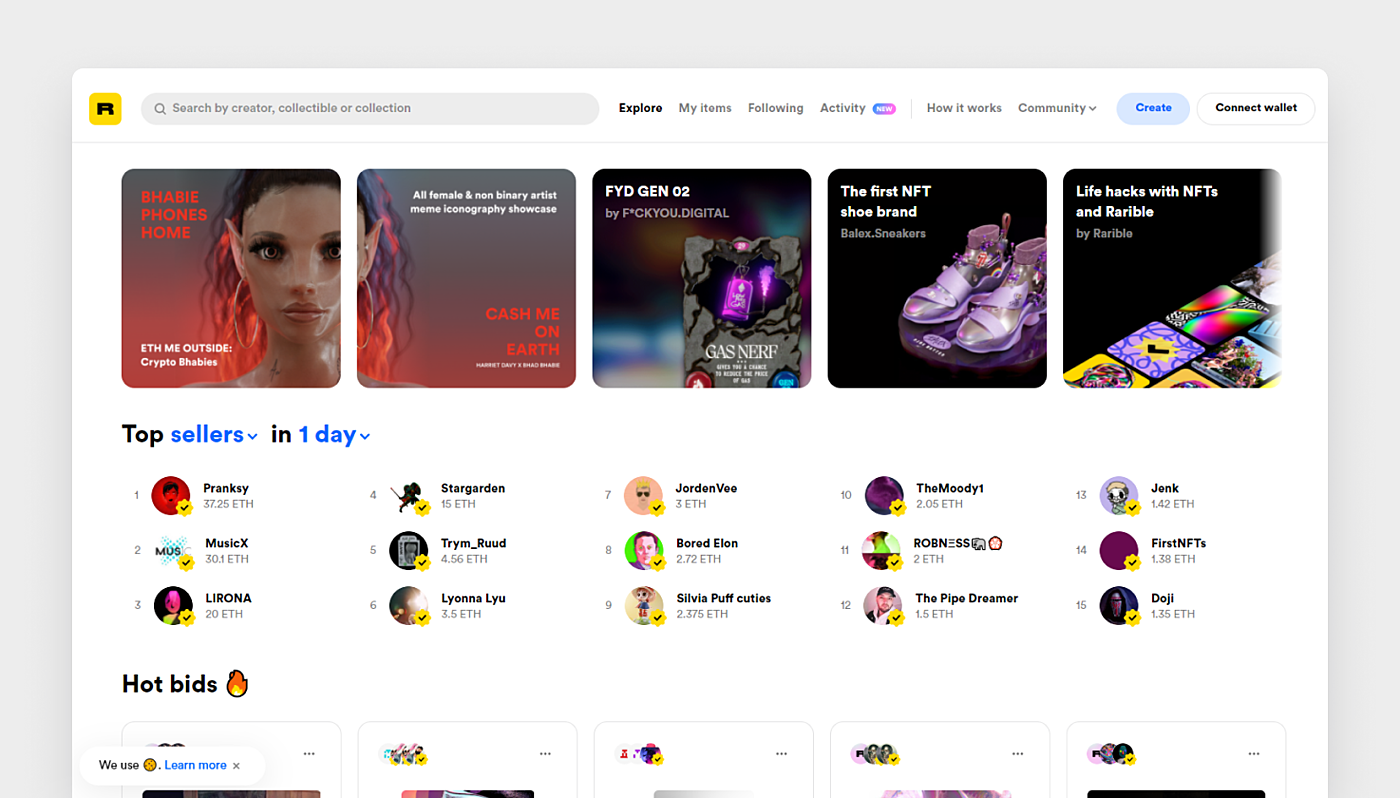
Source: Rarible
Rarible aims to remain a fully decentralized and community-owned NFT marketplace. The company does its best to ensure the safest possible experience for the community, including a secure environment for the buyers and legitimate sellers.

Source: DappRadar
Foundation

Source: Foundation app
Foundation offers transformational products. It was built by creators and artists who had been exploring the possibilities behind crypto for over a decade. It is a playground for artists, curators, and collectors.

Source: DappRadar
Axie Marketplace
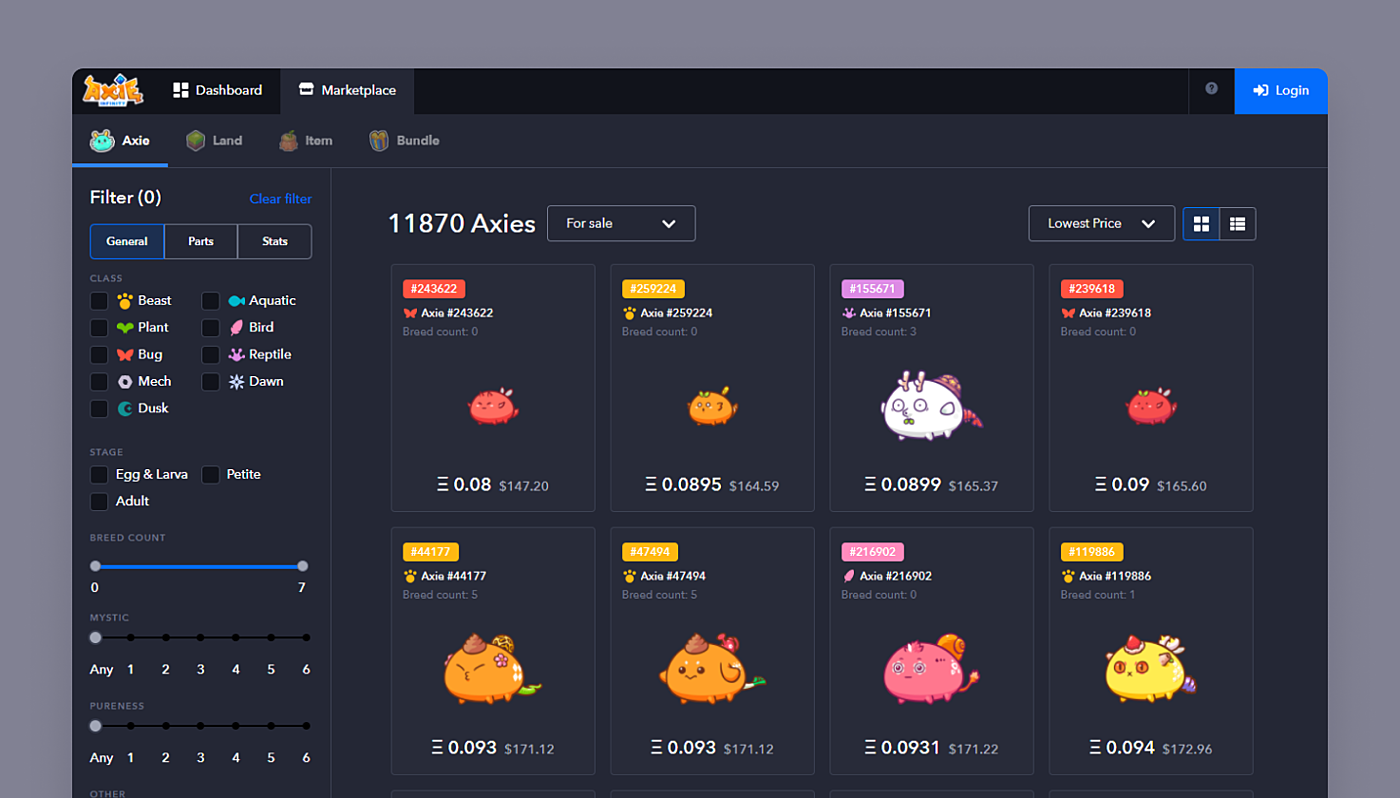
Source: Axie Marketplace
Axies are special characters of the Axie Infinity game that battle, build, and hunt to gain treasure. The marketplace built upon the Ethereum blockchain focuses on selling these cartoon creatures to members of the pet community.

Source: DappRadar
To derive even more inspiration, you can visit such platforms as Super Rare, Nifty Gateway, Mintable, KnownOrigin, or Makers Place.
Components of NFT Marketplace
If we’ve managed to inspire you, and you are ready to design & develop an NFT marketplace like OpenSea, the most essential architecture components are:
- Blockchain technology integration. There are multiple types of blockchain networks (public, private, consortium, and hybrid). Along with such public technologies as IBM Blockchain, Ethereum, Ripple, or Cords, some brands go for new options. For example, NBA Top Shot uses its own new blockchain, called Flow.
- Minting. A computer process validates data, creates a new block, and recordes it into a blockchain. Minting deserves special attention. It’s vital to think in advance if you want to allow NFTs with upfront gas costs or if you wish to introduce lazy minting, which does not require any gas.
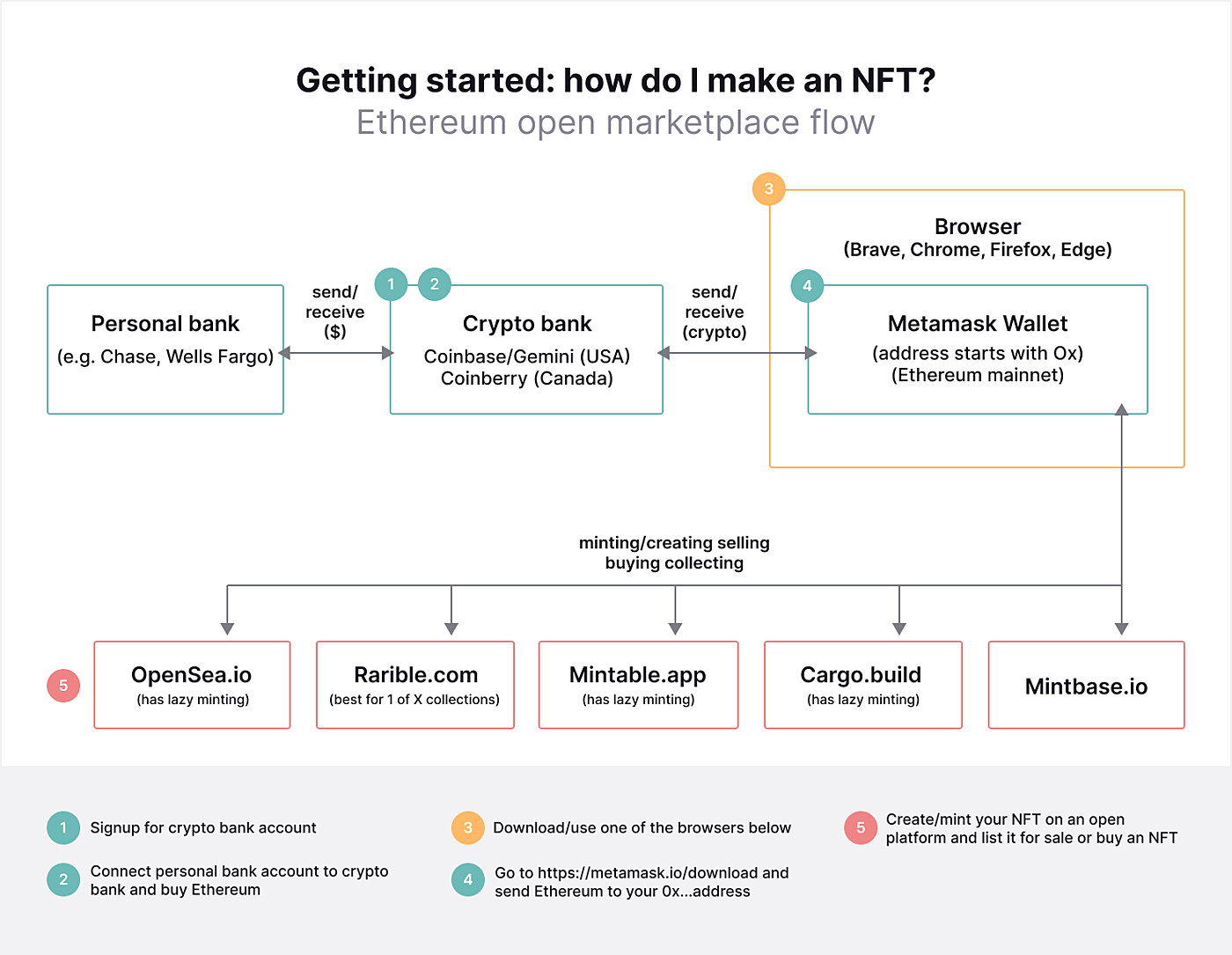
Source: Twitter - Token types. You should define the types of NFT tokens the platform will support. For example, Opensea supports the majority of NFTs, including ERC-721 and ERC-1155.
- Navigation. The user experience is the king. To ensure a smooth journey, it’s vital to plan what your NFT marketplace navigation should be like.
- On-boarding. Gone are the days when the user had enough patience to fill in forms with multiple fields. Smooth on-boarding is a must. Thus, make sure to provide options such as social logins.
- Advanced filters. Ensure the available NFT assets are easily searched for and found in full compliance with the users’ preferences.
- Effective listings. A product page can make or break a sale. Listings with digital assets must be highly informative, include item descriptions and details, current pricing (with an equivalent in USD), and a CTA button designed in full compliance with the niche best practices.
- Secure access to a blockchain wallet. It is one of the biggest concerns for many. Safe access to a crypto wallet is important or even more of a concern when compared to a traditional eCommerce marketplace
- Analytics (transparent price history). The majority of NFT marketplaces offer a bidding system for their digital assets. As a result, the ability to overview the shift of interest is required to keep the fire burning.
- And of course a catalog with digital assets. A collection of any products requires systematic compilation. NFT marketplaces are no exception. CryptoPunks, Cryptofranklinks, and CyberKongz can serve as beautiful examples of digital assets.
CryptoPunks, for instance, are 10,000 uniquely generated characters that are available for purchase to anyone who owns an Ethereum wallet.

Source: CryptoPunks
Curiously, originally these characters could have been claimed and owned by anyone with the wallet, but now the users can buy, bid on, and offer the characters for sale only.
CryptoFranklins, are a limited collection of 1,000 completely unique NFTs inspired by Andy Warhol, Roy Lichtenstein, and other legends of pop art. Each CryptoFranklin is algorithmically generated to feature a combination of 126 potential variables across 12 categories (Skin, Hair, Eyes, Nose, Make-up, etc) created by a talented artist. Each CryptoFranklin is unique and can be owned by a single person on the Ethereum blockchain.
Step-by-Step Guide on NFT Marketplace Design and Development
Following the design-based approach that the Agente team demonstrates in NFT marketplace software development, let’s overview in detail the steps that should be taken to building an NFT platform and guide your non-fungible tokens marketplace development project from beginning to end.
Step #1. Analysis of Business Requirements
At this step, you and your NFT marketplace platform development partner dive into your project details. The technical feasibility of the project and its viability will be evaluated.
Here, you should clearly define:
- Who and how do you wish to sell the NFTs
- The blockchain technology you wish to use for tokenization
- What will make your NFT marketplace stand out
- The analytical tools and dashboards (if any) it will include.
Your answers will provide a vector for the whole process. Will it be a white label solution? What about the blockchain?
Additionally, as you progress into the project, you should discuss the standards you intend to use. Their variety is created to support this or that blockchain technology. For example, ERC-721 of CryptoKitties and ERC-1155 standards are used in Ethereum, or the Flow blockchain has its own standards described in the Flow NFT Standard repo.
Step #2. Discovery Stage
You and your software development partner dig deeper into the design and technical discovery.
The design discovery often covers the following creations:
- User personas
- User stories
- Information architecture
- User flows
- Low fidelity wireframes
UX strategy comes hand-in-hand with NFT platform development discovery and lets you map a long-term plan for your users’ interaction with the NFT platform. You will need to align every touchpoint with your vision of the user experience.
Technical discovery often covers discussion of the following areas:
- General data flow
- Project architecture
- Technological set
- Development
- QA principles
Your team will need to find a happy medium for the user and business needs, and technical capabilities.
Step #3. UX/UI Design
Any step of building an NFT marketplace like Rarible is a complex process that is often performed in iterations. Design is no exception.
While no project is made equal, you are likely to experience the following stages in this step:
- UX wireframing
- Prototyping
- High-fidelity UI mockups
Step #4. NFT Dapp Platform Development
Now that all technical specifications are discussed and the design of your marketplace is ready, the team of software engineers gets to work.
They will develop an NFT Dapp platform for you, plus the backend and frontend of your marketplace, and then combine them to work together. If software engineers receive edits from the QA team, they will update the code to help it work as intended.
Step #5. Quality Assurance
At this step, the QA team takes up the torch. They will run multiple tests to ensure your project goes live bug-free and operates smoothly.
There are likely to be several testing cycles to ensure you launch a top NFT marketplace.
Step #6. Project Release
It seems like we’ve exhausted ourselves at this step, but the NFT design and development process is not yet finished. Importantly, you’ll need to define how you wish to launch your token development solution: in full, by iterations, or using the continuous integration and continuous delivery methods.
Accordingly, your NFT marketplace development company will necessarily recommend a means that suits your project requirements the best.
Step #7. Post-Release Support
Congratulations! Your project is live, but there are still many activities to perform.
Following the data-driven results and your NFT marketplace performance, more bug fixes and updates may be required. At this step, your token marketplace development roadmap may suffer some changes. You may choose to add new features and remove ineffective ones.
NFT Marketplace Features to Adopt from Existing Solutions
If you decide to build your own NFT gallery website or marketplace, make sure to include the following features of the NFT marketplace:
Ranking
The NFT world requires its users to keep track of the demand and token position changes instantly. NFT rankings are often built to be updated hourly and include the display of the following values:
- Volume
- Price
- Graph of behavior
Bundles
Whether you intend to build an NFT marketplace like Opensea or not, packaged non-fungible tokens have gained traction. The possibility of either listing NFTs in bundles for the users or offering bundles for purchase will resonate well with your marketplace users.
Bidding
Tradability is critical when it comes to an NFT marketplace like Rarible. Commonly, the following types of bidding are available (but not limited to):
- Fixed-price listings. As the name implies, the price remains unchanged regardless. Such NFT sales remind us of everyday shopping experiences.
- Sealed first-price auction listing. Here, all bids are submitted simultaneously, and no bidder knows the values that other participants have offered. The highest bidder gets the deal.
- Sealed second-price auction. Also known as a Vickrey auction, such bidding is similar to the first-price auctions. However, the winning bidder will pay the second-highest bid proposed, not their own one.
- Dutch auction listings. Such bidding allows the seller to set the start and end prices and specify the length of time they wish to sell a token.
- English auction listings. Such listings create eBay-like experiences. Here, the seller sets the minimum price for their listings and waits for bids. The deal goes through as soon as the seller finds a bid agreeable.
Filters
No one will deny the importance of quality on-site product filtering. The shoppers just love to quickly access what they are looking for, which makes this feature indispensable. Make sure to carefully consider the filtering options that will have a positive impact on the user experience.
Consider the following options: recently listed, by price, about to expire, most viewed, highest last sale.
The eCommerce industry has always been one step ahead in a large number of filtering opportunities. You can apply the best practices from such top players as eBay, Amazon, Walmart, Etsy, etc. Although we have a digital product, your marketplace users will have an eCommerce-like experience. Its quality depends directly on the buyer-seller interaction and relationships that you manage to establish. And the Agente team will be happy to apply our expertise in custom eCommerce web development to your NFT project.
Cost to Build an NFT Marketplace in 2023
The cost of building an NFT marketplace depends on a number of factors, including its complexity, required features and functionalities.
Generally speaking, an NFT marketplace with basic features can cost anywhere between $50,000 to $500,000. This estimate includes the expenses for website development, smart contract creation, blockchain integration, user interface design, and security measures. Additional costs may arise if you want to incorporate advanced features like auction functionalities, secondary marketplaces, or social media integration.
To accurately determine the cost of building an NFT marketplace in 2023, it is recommended to consult with experienced blockchain development agencies who can provide a detailed cost estimation based on the specific product requirements.
Our Crypto Experience
The Agente team keeps a close watch on the cryptocurrency market and its trends.
In fact, our team has successfully launched our own crypto-tracking plug-in called Cointube. It’s a new-tab extension for the Chrome browser.
The solution aggregates the latest data for the cryptocurrency, such as crypto news, data on ICO, portfolio tracking, etc.
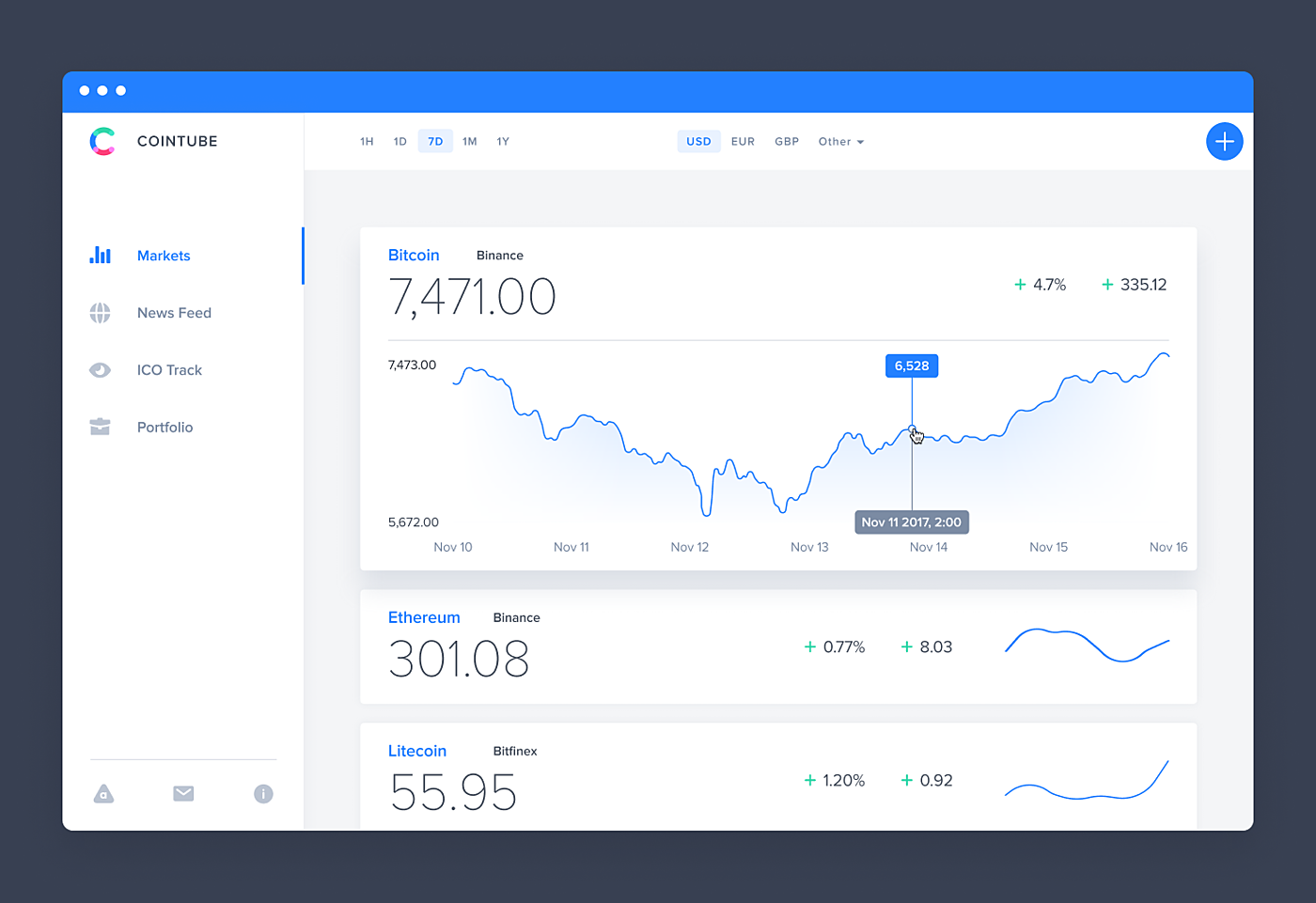
Source: Agente case study
Wrap Up
The NFT hype is certainly far from being over. As the interest in digital assets goes beyond celebrities who develop NFT for arts only, more brands tend to flock to the space and create their own unique NFT tokens.
Now that you see the proven high potential of such galleries and marketplaces, it’s a great time to join the space and produce a solution with better NFT services than the current market players.
Ready to build an NFT marketplace or gallery? As an NFT marketplace development company The Agente team will happily join in on your next software development project and help you in the NFT marketplace design process so you can create and own platform to sell NFT tokens. Request a quote!
Rate this post!
639 ratings, average ratings is 4.6 out of 5
Frequently asked questions
Whether you represent a private business, a large enterprise or an educational institution, our e-learning platform development services will greatly improve the performance of your company.
Why should I consider developing an NFT marketplace in 2023?
NFTs have become increasingly popular in recent years, and this trend is predicted to continue into 2023 and beyond. Therefore, creating an NFT marketplace in 2023 could be a successful business venture. Creators can now monetise their digital assets such as videos, music, artwork and more thanks to NFTs. You can take advantage of this growing market by setting up an NFT marketplace that gives collectors and artists a place to buy and sell their digital works. As the demand for NFTs will only increase, it makes sense to think about creating an NFT marketplace in the гзcoming years.
Do I need to have programming skills to develop an NFT marketplace?
While having a strong technical background can be a big plus while building an NFT marketplace, nevertheless, it is not a necessary requirement for everyone involved in the project. Collaborating with experienced developers or hiring a reliable development team can ensure the successful implementation of the marketplace.
What blockchain should I choose for my NFT marketplace development?
There are a few things to consider when choosing a blockchain for your NFT marketplace development. One of the most important factors is the scalability of the blockchain. As the popularity of NFTs continues to grow, the blockchain you choose should be able to handle a large volume of transactions without affecting the speed or efficiency. Another important factor to consider is the security of the blockchain. As NFTs are unique digital assets, a high level of security is required to protect against theft or fraud. You should also consider the cost of using the blockchain, as some solutions may have higher fees than others.
Related Posts
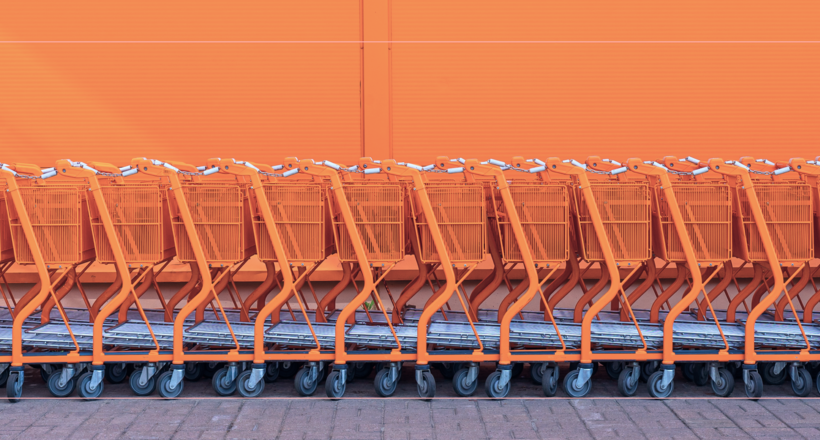
14 January 2024
Marketplace Website Design and Development in 2024: Features, Tech Stack & Cost
Discover the latest in marketplace website design and development, explore features, technology stacks, and gain insights into cost-effective strategies.

11 December 2023
How to Build a P2P Marketplace Website: [Design & Ideas About Development]
Online P2P marketplaces are in high demand. It's crucial to enter the market quickly. Developing a secure peer-to-peer marketplace is complex. Agente can help launch the best solution fast.

How to Build a Peer to Peer Marketplace Website?
With the growing popularity of decentralization and the sharing economy, people are starting to show more interest in building a peer-to-peer marketplace for e-commerce. In this article, we’ll dig deeper into the functionality, main implementation stages, and cost to develop a peer to peer marketplace; we will help you to decide on the best option to start your online P2P business.

09 May 2024
Top 7 Open-Source LLMs for 2024
Here, we break down everything you need to know about open source LLM models: top 7 offerings on the market, their pros, cons, and capabilities.

19 January 2024
AI Model Fine-Tuning: How to Use Your Organization's Data?
Organizations are transitioning from generic solutions to hyper-customized intelligence, seeking AI models designed to address their unique challenges and propel them toward strategic objectives.
This demand has propelled fine-tuning to the forefront of AI development.

16 January 2024
ChatGPT Plugin Development: Features and Benefits for Business
Explore the process of crafting a ChatGPT plugin tailored precisely to meet your unique business requirements.
Let's talk
Is there a challenge your organization or company needs help solving? We’d love to discuss it.

Managing Director, Partner
Andrew Terehin

Thank You!
Your message has been successfully sent.
We will contact you very soon.







